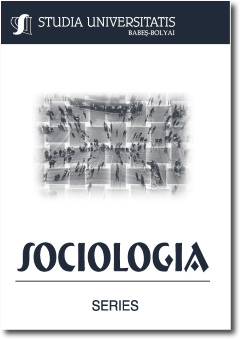THE MIGRATION OF ROMANIAN CROATS: BETWEEN ETHNIC AND LABOUR MIGRATION
THE MIGRATION OF ROMANIAN CROATS: BETWEEN ETHNIC AND LABOUR MIGRATION
Author(s): Remus Gabriel AnghelSubject(s): Social Sciences
Published by: Studia Universitatis Babes-Bolyai
Keywords: migration; ethnic migration; Croat ethnicity.
Summary/Abstract: Romanian migration is one of the largest migration movements in Europe. So far, much of the efforts to analyse and theoretically frame this phenomenon have focused mainly on the analysis of labour migration of Romanian citizens, mostly ethnic Romanians. The literature on Romanian migration succeeded in showing how the networks of Romanians functioned, that kinship and the home locality played a determinant role in the building and functioning of migrant networks. Due to the expanding networks, Romanian labour force was involved in enduring transnational migration circuits. Studies also show how migrant networks functioned in different states that employ open or restrictive policies, supporting or hindering migrants’ efforts to adapt to labour markets. On the other hand, the analysis of ethnicity in migration received less consideration. In this paper I attempt to illuminate the ways in which ethnicity influences migration. The analysis is carried out with ethnic Croats from Romania, a small ethnic group whose members first migrated to Serbia, then to Croatia and later to Austria. In these phases of migration, three uses of ethnicity unfold: ethnicity as access to language, providing easier access to job openings and social ties to locals; ethnicity as legal status enabling access to citizenship, rights and opportunities; and ethnicity as a form of transnational solidarity to co-ethnic minorities, providing access to supplementary forms of social trust enabled by minority organizations. In this context, migrant networks functioned as provider of opportunities in a context where ethnicity was a structuring factor of this migration. In the case under study, two cumulating social resources – social capital and migrants’ ethnicity – granted the easiness and success of migration, as well as the economic prosperity of migrants’ households.
Journal: Studia Universitatis Babes-Bolyai - Sociologia
- Issue Year: 57/2012
- Issue No: 2
- Page Range: 9-26
- Page Count: 18
- Language: English

